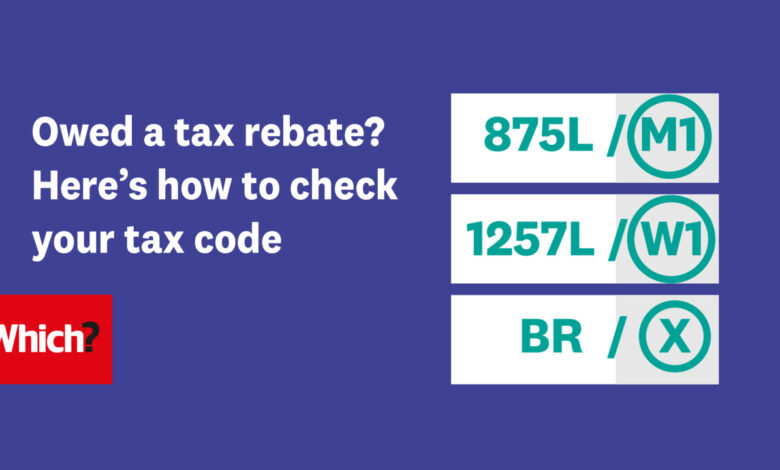list of tax codes and what they mean hmrc

In the complex landscape of taxation, HMRC tax codes stand as cryptic symbols that often leave taxpayers scratching their heads in confusion. Yet, these seemingly random combinations of letters and numbers hold the key to how much tax individuals pay and can significantly impact their financial affairs. In this comprehensive guide, we’ll delve deep into the world of HMRC tax codes, unraveling their meanings, exploring their implications, and empowering taxpayers to navigate this crucial aspect of their financial lives with confidence.
Introduction to HMRC Tax Codes
At the heart of the UK’s tax system lie HMRC tax codes, alphanumeric sequences assigned to taxpayers that determine how much income tax should be deducted from their earnings. Understanding these codes is paramount for every taxpayer, as they directly influence the amount of tax one pays and can impact various financial transactions, from salary payments to state benefits.
HMRC tax codes comprise a combination of letters and numbers, each carrying specific significance. For instance, the numbers within the tax code represent the amount of tax-free income a taxpayer is entitled to in a given tax year, while the letters denote various allowances, deductions, and special circumstances affecting the individual’s tax liability.
Navigating the intricacies of tax codes can be daunting, especially for those unfamiliar with the terminology and conventions used by HMRC. However, by breaking down the components and understanding the underlying principles, taxpayers can gain clarity and confidence in managing their tax affairs effectively.
How HMRC Tax Codes Work
At first glance, HMRC tax codes may appear as a jumble of letters and numbers devoid of meaning. However, upon closer inspection, they reveal a systematic structure designed to reflect each taxpayer’s unique circumstances and tax obligations.
The format of a tax code typically consists of several elements, with each element serving a specific purpose. For instance, the numbers within the tax code indicate the taxpayer’s tax-free personal allowance – the amount of income they can earn before they start paying tax. This allowance is usually adjusted annually by the government in line with inflation and other economic factors.
Additionally, the letters within the tax code convey additional information regarding the taxpayer’s situation. For example, the letter ‘L’ signifies the standard tax code for most individuals, indicating that they are entitled to the basic personal allowance. Other letters may denote special circumstances, such as marriage allowance or deductions for benefits in kind.
Understanding the composition and interpretation of tax codes is essential for taxpayers to ensure they are being taxed correctly and to identify any discrepancies that may require attention from HMRC. By deciphering the meaning behind the codes, individuals can take control of their tax affairs and avoid potential pitfalls.
Common HMRC Tax Codes and Their Meanings
HMRC tax codes come in various forms, each tailored to reflect different scenarios and taxpayer profiles. While some codes are standard across the board, others are specific to certain situations or individuals. Here are some of the most common HMRC tax codes and their meanings:
- 1250L: This is the standard tax code used for most individuals who have one job or pension. The numbers ‘1250’ represent the tax-free personal allowance for the tax year, which is £12,500 in this case. The letter ‘L’ indicates that the taxpayer is entitled to the basic personal allowance.
- BR: The ‘BR’ tax code stands for Basic Rate, indicating that all income is taxed at the basic rate of 20%. This code is often used for individuals with multiple sources of income or for those who have not provided their employer with a P45 form.
- D0 and D1: These emergency tax codes are used when HMRC does not have enough information to calculate the taxpayer’s tax code accurately. The ‘D0’ code means that all income is taxed at the higher rate of 40%, while the ‘D1’ code applies the additional rate of 45%.
Understanding these common tax codes and their implications is crucial for taxpayers to ensure they are being taxed correctly and to identify any discrepancies that may require attention from HMRC.
Special Circumstances and Tax Codes
In addition to standard tax codes, HMRC also assigns special tax codes to individuals with specific circumstances or entitlements. Understanding these special circumstances and how they are reflected in tax codes is essential for taxpayers to ensure they receive the appropriate tax treatment.
One such special circumstance is the marriage allowance, which allows couples to transfer a portion of their personal allowance between them if one partner earns less than the personal allowance threshold. This can result in a tax code adjustment for one or both partners, reflecting the additional allowance transferred.
Another example is the tax codes used in Scotland and Wales, which differ from those used in the rest of the UK due to differences in income tax rates and thresholds. Taxpayers residing in Scotland or Wales may have different tax codes to reflect these regional variations, ensuring they are taxed correctly according to their location.
Understanding the implications of these special circumstances and how they are reflected in tax codes is essential for taxpayers to ensure they receive the appropriate tax treatment and maximize any entitlements available to them.
Changes to Tax Codes
HMRC tax codes are not static and can change over time due to various factors, such as changes in personal circumstances, employment status, or tax legislation. Understanding when and why tax codes may change is essential for taxpayers to ensure they are being taxed correctly and to identify any discrepancies that may require attention from HMRC.
Tax codes may change at the start of the tax year, usually in April, to reflect updated tax allowances and thresholds set by the government. Changes in personal circumstances, such as getting married or entering into a civil partnership, may also result in a tax code adjustment to reflect any entitlements or deductions available as a result of these changes.
Changes in employment status, such as starting a new job or receiving additional income from self-employment or investments, may also trigger a tax code change to ensure the taxpayer’s total income is being taxed correctly across all sources.
Understanding the reasons for tax code changes and how they are implemented is essential for taxpayers to ensure they are being taxed correctly and to identify any discrepancies that may require attention from HMRC.
Understanding Tax Code Notices
HMRC communicates tax code changes to taxpayers through a variety of channels, including paper notices sent by post and digital notifications through the Personal Tax Account (PTA) online service. Understanding how to interpret these tax code notices and what action to take in response is essential for taxpayers to ensure they are being taxed correctly and to identify any discrepancies that may require attention from HMRC.
Tax code notices typically contain information about the taxpayer’s current tax code, any changes that have been made, and the reasons for these changes. They may also include instructions on what action, if any, the taxpayer needs to take, such as contacting HMRC to provide additional information or updating their tax code through the PTA online service.
Taxpayers should carefully review any tax code notices they receive from HMRC to ensure the information is accurate and up-to-date. If they believe there is an error or discrepancy in their tax code, they should contact HMRC as soon as possible to rectify the issue and prevent any potential tax liabilities or penalties.
Effect of Tax Codes on Pay and Benefits
HMRC tax codes play a significant role in determining how much tax is deducted from an individual’s earnings and can have a direct impact on their take-home pay and entitlement to state benefits. Understanding how tax codes affect pay and benefits is essential for taxpayers to ensure they are receiving the correct amount of income and support.



